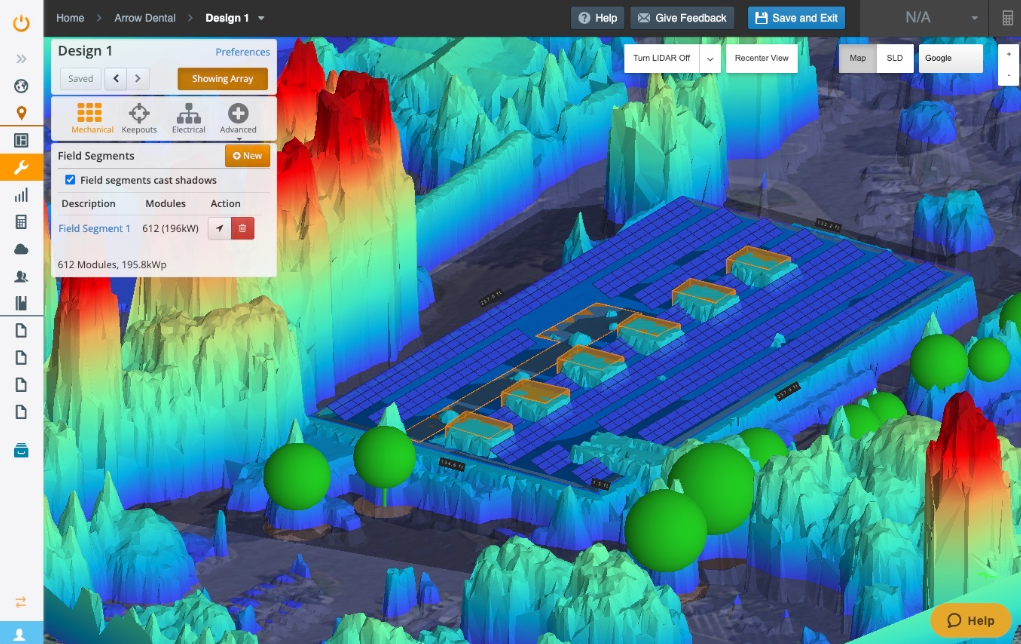Community solar industry calls its shot: 20 GW of capacity by 2025 (but these 7 changes are needed)

Reminder: More than 75 percent of American households do not have access to solar power because they either do not own their homes or their roofs are unable to host a solar system. This is where community solar development comes in handy. Customers can subscribe and gain equal access to the economic and environmental benefits of solar energy generation through energy bill credits.
Over 80 community solar providers jointly committed to building 20+ GW of community solar by 2025 at the Department of Energy’s National Community Solar Partnership Summit, heeding the DOE call in October 2021 to scale up community solar. You may notice that 20 GW is 6 GW less than the DOE tossed out originally, but the Coalition for Community Solar Access (CCSA) says the commitment aligns with that main DOE goal of powering 5 million American homes with community solar by 2025 (and saving consumers $1 billion).
Regardless, getting to either 20 or 26 GWs by 2025 will require some changes across the country. The DOE announced several new initiatives to get to the target, and the CCSA outlined seven key actions that will be critical to reaching these DOE and industry goals.
“The industry is ready to help DOE meet its ambitious community solar goals,” said Jeff Cramer, President and CEO of Coalition for Community Solar Access. “With the combination of DOE’s NCSP initiatives and the adoption of other critical actions by state and federal policymakers, the industry can meet this goal and satisfy pent up demand, save American consumers and businesses money, create local jobs, enhance grid resilience and protect the environment and community health.”
Pathway to Success
A main point of discussion at the Summit included the “Pathway to Success,” a plan to address persistent barriers to equitable access. The plan has five focus areas: developing community solar ‘knowledge and know-how’, expanding state-level programs, improving access to financing, reducing customer acquisition barriers, and broadening awareness of the benefits of community solar programs. developing community solar ‘knowledge and know-how’, expanding state-level programs, improving access to financing, reducing customer acquisition barriers, and broadening awareness of the benefits of community solar programs. The initiatives supporting this pathway include:
- A new States Collaborative, engaging nearly half states and the District of Columbia, which will support expansion and development of new community solar programs at the state level. This Collaborative will be made up of state energy officials and program administrators and by providing best practices, technical assistance, and opportunities for direct peer-to-peer learning.
- The Credit Ready Solar Initiative, which will help community solar developers better access project financing. This initiative will bring together lenders, philanthropic institutions, and community solar developers—especially those that are community-based or serve low- to moderate-income households—to create standard processes and a marketplace for deploying project capital.
- A $2 million NCSP Technical Assistance program, which is offered on a rolling basis at no cost to NCSP partners and provides personalized support to help them accelerate implementation, improve the performance of their program or project, and build capacity for future community solar development.
7 needed actions
The community solar industry is already growing like crazy — sporting record-breaking growth in 2020 (and possibly 2021 once the MWs are tallied), but there is a limit. Not every state allows for community solar deals, and many that do have caps on it. This is why CCSA says policy plays a key role and recommends these seven actions to get to 20 GW by 2025:
1. Implement the first-ever federal funding and tax incentives for community solar projects through passage of the Build Back Better Act and the Community Solar Consumer Choice Act.
2. Mobilize 10 new states to create third-party community solar programs for a total of 31 states and the District of Columbia with programs by 2025. The next potential candidates include Ohio, Michigan, Pennsylvania and Wisconsin, which have all introduced community solar legislation.
3. Increase the sizes of existing programs to meet pent up customer demand and achieve the lowest-cost, most resilient electric grid. New Jersey, Maryland and Virginia are three states with programs that are just scratching the surface in terms of the size of the programs and how many customers have access compared to the size of the populations in those states. Meanwhile, Illinois and Massachusetts have started to unlock new community solar tranches.
4. Improve upon technical and cost barriers to interconnection through integrated grid planning, appropriate incentives, and proactive policy.
5. Build and train a highly skilled local workforce to fulfill the thousands of new family-sustaining jobs that will be created across the country to build and operate the new projects. New York’s 10 GW community solar roadmap is an example, “requiring all projects 1 MW and over to hire labor at prevailing wage.”
6. Enhance the standard of bill savings for customers with low to moderate incomes and build avenues that increase awareness of and participation in community solar projects.
7. Continue evolving community solar products to ensure customers can easily and readily participate, save money, and drive the development of more solar in their communities. EnergySage’s Community Solar platform is potential one great resource here.





Comments are closed here.